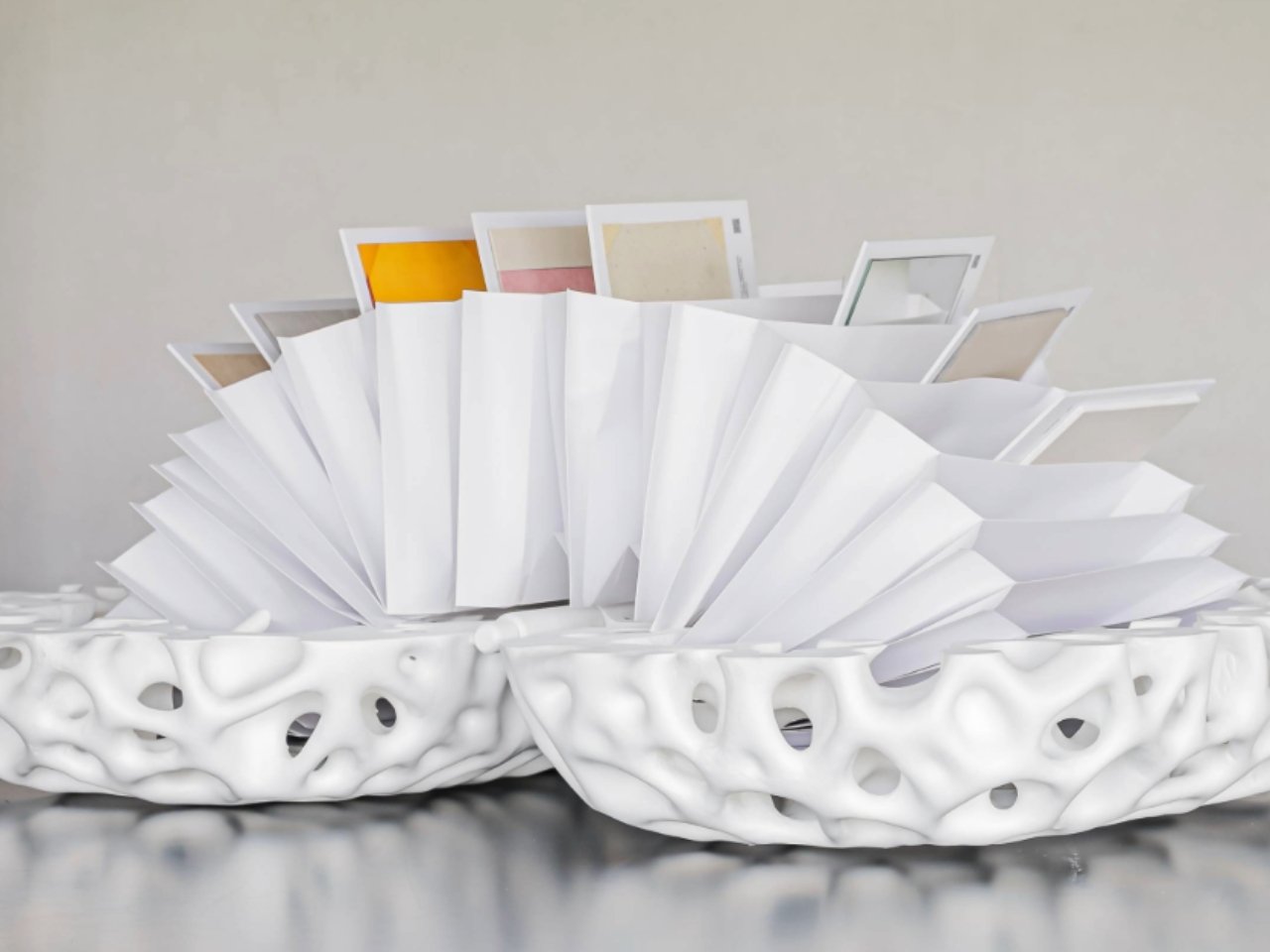Imagine packing the future into a suitcase. Not your clothes or toiletries, but ideas about how we’ll shop, connect, and experience retail spaces in the years to come. That’s exactly what Valencia-based design studio Cul De Sac has done with their latest project, and honestly, it’s one of the coolest design concepts I’ve seen in a while.
The piece is part of Gerflor’s “Portable Architecture” initiative, a traveling exhibition that challenges three international design studios to literally pack their visions of tomorrow into custom suitcases. Think of it as a design thought experiment meets art installation, inspired by Marcel Duchamp’s famous “Box in a Valise” concept where he miniaturized his entire body of work into a portable case.
Designer: Cul De Sac
What makes Cul De Sac’s contribution so compelling is its radical optimism about retail’s future. While many of us have grown accustomed to sterile, product-focused shopping environments, architect and creative director Borja Berna offers a completely different vision. “The future of retail will be human,” he explains. “We come from a past where the product was the center, but the spaces of the future will put the person at the center. They will be places of community, connection, where things happen beyond the purchase.”
That philosophy isn’t just talk. It’s physically manifested in the suitcase’s 3D-printed design, which looks like something between a neural network and organic coral. The structure breathes with these flowing, interconnected forms that evoke energy pathways and human connections. It’s deliberately designed to feel alive, like it’s constantly evolving and adapting, much like the retail spaces Berna imagines for our future.
The choice of 3D printing feels particularly intentional here. This technology allows for organic, impossible-to-manufacture-otherwise shapes that traditional fabrication methods simply can’t achieve. The result is a sculptural piece that captures fluidity and movement in a way that feels almost biological. You can see why they chose this approach when you look at the images: those undulating surfaces and cellular patterns really do suggest something living rather than static.
But here’s where it gets really interesting. The suitcase doesn’t just contain samples of Gerflor’s flooring materials as a reference library. The container itself becomes the statement. As Berna puts it, they wanted “the design itself to summarize our vision of the future of retail.” The piece integrates materials from Gerflor’s Creation range not as mere swatches but as part of the identity itself. In a market saturated with brands competing for attention, materials become the language through which spaces communicate with people and create memorable experiences.
Berna describes the biggest challenge as “condensing usually conceptual ideas into a tangible piece.” And you can feel that tension in the final work, in the best possible way. It’s both abstract and concrete, theoretical and physical. The suitcase manages to be a manifesto, a prototype, and an art object all at once.
This project sits alongside equally intriguing contributions from Studio Banana, who tackled the future of office spaces, and Nini Andrade Silva from Madeira, who explored hotels as experiential gathering places. Together, these three suitcases form a traveling exhibition that will move through seven cities across the Iberian Peninsula, sparking conversations about how we want to inhabit tomorrow’s spaces.
There’s something wonderfully democratic about packaging big architectural ideas into portable, approachable formats. Rather than presenting a massive installation or dense white paper, these studios offer something you can literally walk around, something that invites curiosity and conversation. As Juan Segura, Marketing Manager of Gerflor Iberia, notes, “More than showing product, we want to generate dialogue.”
What I love most about this project is how it reframes retail from transactional to transformational. In an era where online shopping dominates and physical stores struggle to justify their existence, Cul De Sac suggests that the answer isn’t better product displays or flashier signage. It’s about creating spaces where human connection happens, where community forms, where something meaningful occurs beyond the exchange of goods for money.
That 3D-printed suitcase, with its neural-network-like structure, becomes a perfect metaphor: retail spaces as living organisms that facilitate connections between people, emotions, and yes, brands, but in ways that feel organic rather than forced. It’s a vision of shopping as something closer to a social experience than a chore. And really, isn’t that the kind of future we’d all want to pack our bags for?
The post The Future of Retail Fits in This 3D-Printed Suitcase first appeared on Yanko Design.

